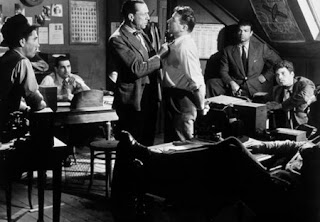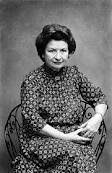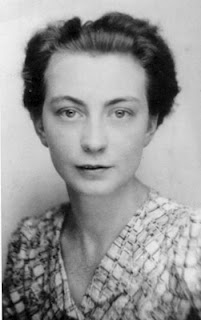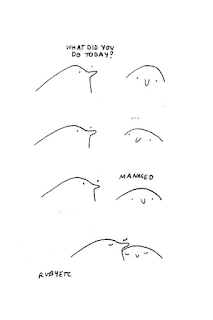A short life
It's got a rather natty 1930's British Rail style travel poster on the cover, and I thought at first that it was a modern thriller set in the 1930's (most, in my experience, are rather poor pastiches of Lord Peter Wimsey), but then I noticed a glowing review on the back cover by Dorothy L. Sayers. This was genuine, golden-age-of-detective-fiction writing.
St. John Sprigg was born in 1907. He became a journalist, and developed a passion for flying machines, which is evident in this novel. He wrote books about aviation, and in 1933 published his first crime novel. Around the same time he became a Marxist, and also wrote books about politics under the name Christopher Caudwell. (Presumably St. John Sprigg sounded a little too uppercrust). His life in many ways at this point, as a very useful introduction points out, mirrored the later Poet Laureate, C. Day Lewis, who also dabbled in crime fiction and communism. Their paths diverged dramatically however with the outbreak of the Spanish Civil War. Sprigg joined the International Brigade, and in February 1937 was killed in action, just short of his 30th birthday.
Death of an airman went swiftly out of print, and has only recently been resurrected, thanks to the British Library's Classic Crime series. After reading this novel, you have to wonder what might have been if Sprigg hadn't gone to Spain. It is everything that Sayers praised - bubbling over with zest and vitality....an ingenious plot....full of good puzzles. I suspect that Sprigg would probably have got even better as he matured.
The novel is set on a 1930's airfield. The Bishop of Cootamundra, on leave from his Australian diocese, arrives there hoping to get a pilot's licence, so that he can adminster to his widely spread flock. It soon becomes evident that there's something not quite right about Baston Aerodrome, and the apparent suicide of one of the instructors will lead to some dark secrets being uncovered.
It's great fun, escapist reading. Although some of the plot is highly unlikely, the drug smuggling aspect is way ahead of its time; and, for me, marked a significant change. No more is cocaine the "fun drug" of the 1920's, the whole of the drugs scene is portrayed in a much darker fashion. The crimes themselves are cleverly plotted, there are likeable heroes, and if a few of the characters are more caricature than real people, they still blend in extremely well.
There is too, an odd feeling of nostalgia. Written just five years before the Battle of Britain, little could Sprigg realise how much his beloved airfields would change in such a short time. One of the instructors moans that "In my young days we used to go solo in two hours. Now everyone seems to want twelve hours. In another ten years they'll take a fortnight...". Within five years, pilots could sometimes face less than twelve hours training before going up to face the Luftwaffe. Most civilian airfields of any reasonable size would end up commandeered by the RAF, as, I'm sure would have happened to the fictional Baston.
Despite the end of the 1930s, it was also an oddly happy, innocent decade. There is a delightful depiction of an airshow, with definitely NO Health or Safety concerns; including a motley collection of Brownies, the "Aeries" who have ambitions to take to the skies and are allowed to rampage unfettered over the airfield led by the redoubtable Lady Crumbles.
This was a really enjoyable read, made the more poignant by the early death of its author. There could have been so much more. Perhaps that's true of the 1930s generally. A decade that had held so much promise had an ending that would change the face of the world forever.









Comments